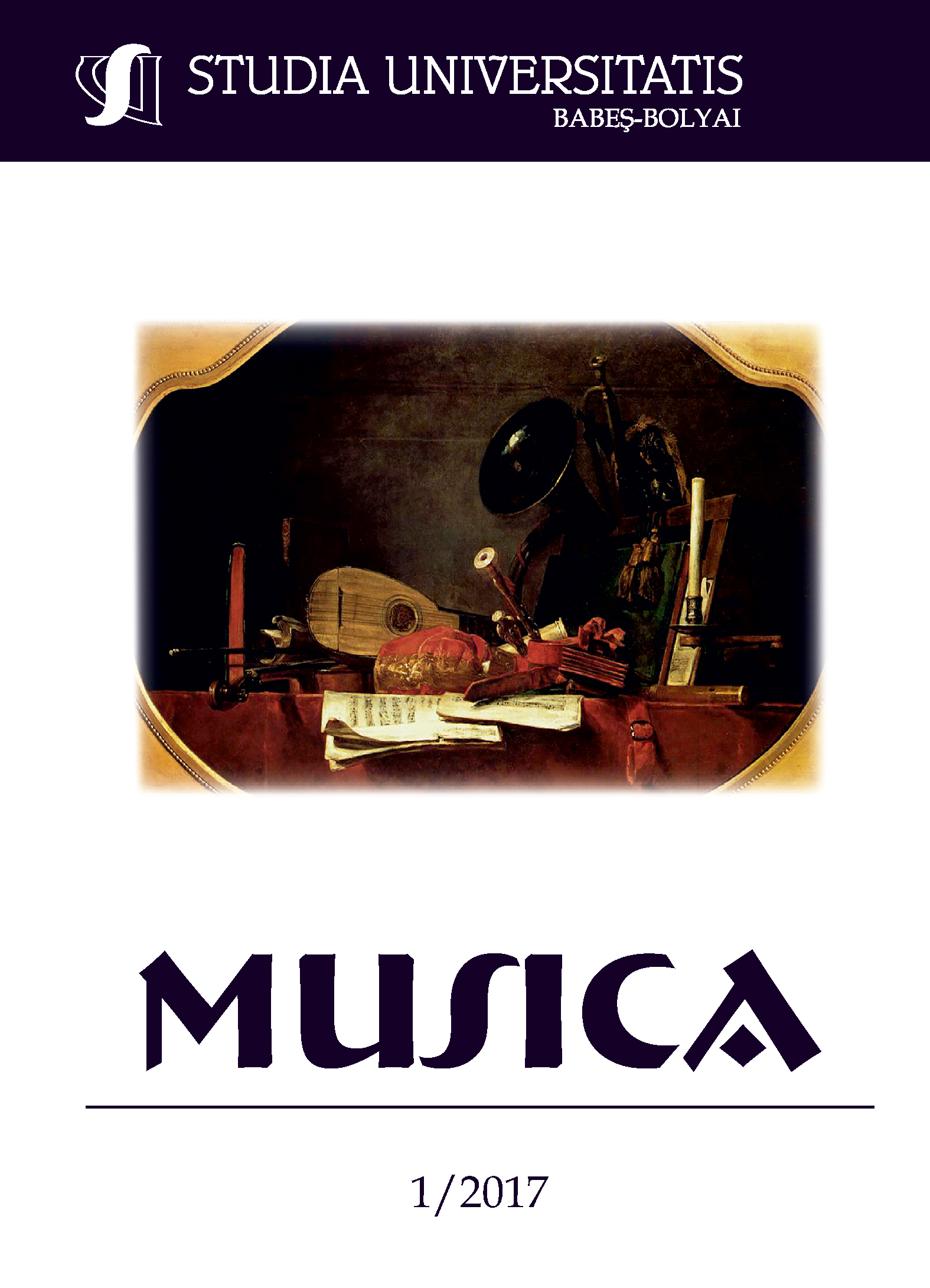KONNOTATIONEN DES HEILIGEN IN DER ERÖFFNENDEN STURMSZENE VON GIUSEPPE VERDI’S OTELLO
DOI:
https://doi.org/10.24193/subbmusica.2017.1.15Keywords:
Otello, Verdi, Othello, Shakespeare, Sacred.Abstract
Sacred Connotations in the Opening Storm from Giuseppe Verdi’s Otello. Focusing on Giuseppe Verdi’s adaptation of Shakespeare’s Othello, this paper discusses the usage of the four natural elements – Earth, Air, Water, Fire – and their sacred connotations in the opening storm of Otello. It is common for composers to express key thematic points in the overture or the first scene of an opera and to develop them throughout the entire piece. In adapting William Shakespeare’s play, Verdi chose the tempest in the second act as a starting point for his opera. Thus, The great contention of the sea and skies (Othello, II.1.91) acquires powerful acoustic and visual effects in Verdi’s storm, mirroring Othello’s troubled heart: Flashes! Crashes! Whirlpools! Howling winds and thunder’s mighty roar! Air and water shake together, shaken is the ocean-floor! (Otello, I.1.12-15). Both the opera libretto and the orchestral accompaniment are expressive of the forces of nature which reflect, metaphorically, instances from Othello’s journey through life. Wind, fire, sea, thunder, rocks, lightning, flames – all contribute to offering an insight into what is about to happen. The musical accompaniment is a powerful tool in conveying spirituality, while Shakespeare’s lines resonate in the libretto to the same purpose.
References
***, Dictionnaire des symboles, Robert Laffont / Jupiter, Paris, 1969.
***, Vocabulaire de Théologie Biblique, Cerf, Paris, 1988.
Biedermann, Hans, Dicționar de simboluri (Wörterbuch der Symbole), Saeculum I.O., Bucureşti, 2002.
Brunel, Pierre und Wolff, Stefanie (Hrsg.), L’Opera, Edition Bordas, Milano, 1987.
Budden, Julian, The Operas of Verdi. 3 From Don Carlos to Falstaff, Clarendon Press, Oxford, 1992.
Bughici, Dumitru, Dicționar de forme și genuri muzicale (Wörterbuch der musikalischen Formen und Gattungen), Editura muzicală a Uniunii Compozitorilor, Bucureşti, 1974.
Eliade, Mircea, Das Heilige und das Profane: vom Wesen des Religiösen, Rohwolt Verlag,1957.
Mircea, Ioan, Dicționar al Noului Testament (Wörterbuch des Neuen Testaments), Editura Institutului Biblic şi de Misiune al Bisericii Ortodoxe Române, Bucureşti, 1995.
Otto, Rudolf, Sacrul (Das Heilige), Editura Dacia, Cluj-Napoca, 1992.
Pleşu, Andrei, Despre îngeri (Das Schweigen der Engel), Humanitas, București, 2003.
Pleşu, Andrei, Parabolele lui Isus. Adevărul ca poveste. (Die Gleichnisse Jesu. Die Wahrheit als Geschichte), Humanitas, Bucureşti, 2012.
Solovţova, Liubov, Giuseppe Verdi, Editura Muzicală, Bucureşti, 1960.
Verdi, Giuseppe, Otello, Ricordi, Milano, 1964.
Wunenburger, Jean-Jacques, Sacrul (Das Heilige), Editura Dacia, Cluj-Napoca, 2000.
https://wordproject.org/bibles/de/index.htm
http://www.william-shakespeare.de/othello1/othello.htm
Downloads
Published
How to Cite
Issue
Section
License
Copyright (c) 2017 Studia Universitatis Babeș-Bolyai Musica

This work is licensed under a Creative Commons Attribution-NonCommercial-NoDerivatives 4.0 International License.






